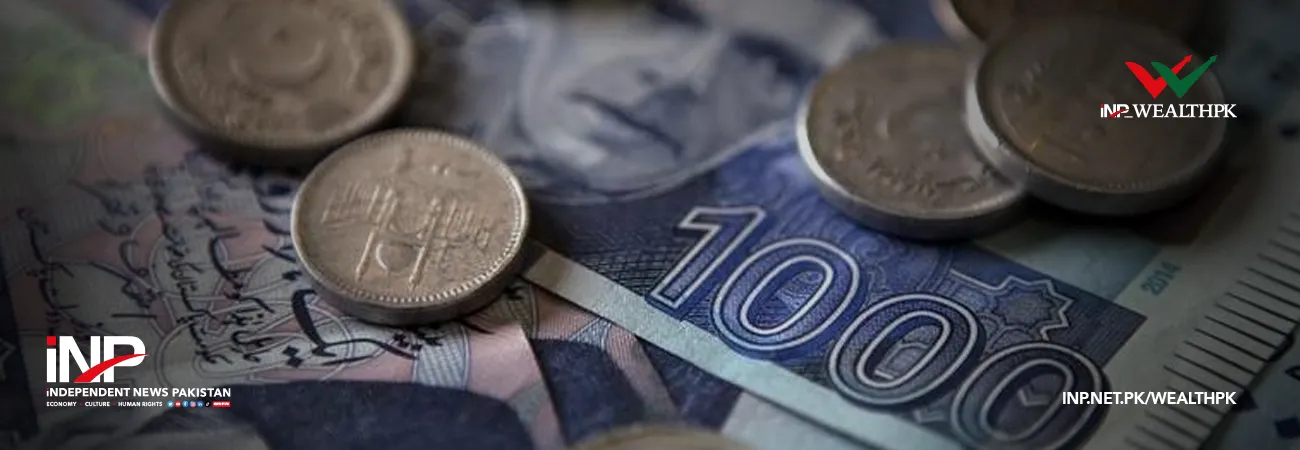INP-WealthPk
By Irfan Ahmed
ISLAMABAD, April 18 (INP-WealthPK): Pakistan’s trade deficit has widened by 70.14% to reach a record high of $35.393 billion during the first nine months of the current fiscal year 2021-22, according to the Pakistan Bureau of Statistics (PBS),
This is because imports are rising exponentially compared to exports, which climbed in July-March this year compared to the corresponding period of the last year, reports WealthPK.
Exports increased by 24.67% and remained at $23.298 billion in the first nine months (July-March) of the current fiscal year 2021-22 compared to $18.687 billion during the same period of 2020-21.
Imports climbed by 48.63% in the first nine months (July-March) of the current fiscal year, reaching $58.691 billion, up from $39.489 billion in the same period the previous year.
[caption id="attachment_66089" align="aligncenter" width="696"] Source: PBS website/WealthPk research[/caption]
According to the PBS, trade deficit widened by 11.63% month-on-month to $3.446 billion in March 2022 as against $3.087 billion in the previous month (Feb 2022).
Imports increased by 4.72% in March 2022 to $6.186 billion from $5.907 in February 2022. Furthermore, exports fell by 2.84% in March 2022 to $2.740 billion from $2.820 billion in February 2022.
[caption id="attachment_66088" align="aligncenter" width="696"]
Source: PBS website/WealthPk research[/caption]
According to the PBS, trade deficit widened by 11.63% month-on-month to $3.446 billion in March 2022 as against $3.087 billion in the previous month (Feb 2022).
Imports increased by 4.72% in March 2022 to $6.186 billion from $5.907 in February 2022. Furthermore, exports fell by 2.84% in March 2022 to $2.740 billion from $2.820 billion in February 2022.
[caption id="attachment_66088" align="aligncenter" width="696"] Source: PBS website/WealthPk research[/caption]
However, on a year-on-year basis, trade deficit widened by 5.48% year-on-year in March 2022 climbing to $3.446 billion up from $3.287 billion in March 2021. This is because imports registered an increase of 9.86% on a year-on-year basis and jumped from $5.631 billion to $6.186 billion.
Exports witnessed an increase of 15.91% to $2.740 billion in March 2022 from $2.364 billion in the same period last year.
According to economic experts, the recent increase in crude oil prices of $110/barrel as well as resurgence in local demand are posing headwinds to the trade balance, as the import bill is expected to stay high.
Inflation has reached its peak now and will decline in the coming months along with imports and trade deficit.
While trade deficit is not inherently bad or good, it can have different effects, depending on the economy in context. In Pakistan’s context, the simplest cost will be increasingly higher costs of imported goods for consumers while domestic workers earn less due to a weakened rupee. Depreciation of rupee can be welcome in the global economic context, but not over the longer term.
Ways to shrink trade deficit
To minimize the import bill, the government should restrict the import of cars and increase Regulatory Duty (RDs) and Additional Customs Duty on certain luxury commodities.
To reduce the trade deficit, the country's manufacturing capacity should be increased. More capacity for high-quality, low-cost production means more exports. The country should create and implement a long-term strategy for enhancing a firm’s productivity that promotes competition, innovation, and maximizes export opportunities.
In a nutshell, Pakistan’s economic growth is dependent on its exports by earning income from abroad. If the administration is serious about reducing the trade deficit, then trade policy must be on top of the list and exports must be increased. Pakistan already did a good work for foreign investors by providing a better environment for business and sooner or later trade deficit will shrink.
Source: PBS website/WealthPk research[/caption]
However, on a year-on-year basis, trade deficit widened by 5.48% year-on-year in March 2022 climbing to $3.446 billion up from $3.287 billion in March 2021. This is because imports registered an increase of 9.86% on a year-on-year basis and jumped from $5.631 billion to $6.186 billion.
Exports witnessed an increase of 15.91% to $2.740 billion in March 2022 from $2.364 billion in the same period last year.
According to economic experts, the recent increase in crude oil prices of $110/barrel as well as resurgence in local demand are posing headwinds to the trade balance, as the import bill is expected to stay high.
Inflation has reached its peak now and will decline in the coming months along with imports and trade deficit.
While trade deficit is not inherently bad or good, it can have different effects, depending on the economy in context. In Pakistan’s context, the simplest cost will be increasingly higher costs of imported goods for consumers while domestic workers earn less due to a weakened rupee. Depreciation of rupee can be welcome in the global economic context, but not over the longer term.
Ways to shrink trade deficit
To minimize the import bill, the government should restrict the import of cars and increase Regulatory Duty (RDs) and Additional Customs Duty on certain luxury commodities.
To reduce the trade deficit, the country's manufacturing capacity should be increased. More capacity for high-quality, low-cost production means more exports. The country should create and implement a long-term strategy for enhancing a firm’s productivity that promotes competition, innovation, and maximizes export opportunities.
In a nutshell, Pakistan’s economic growth is dependent on its exports by earning income from abroad. If the administration is serious about reducing the trade deficit, then trade policy must be on top of the list and exports must be increased. Pakistan already did a good work for foreign investors by providing a better environment for business and sooner or later trade deficit will shrink.













